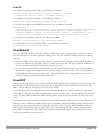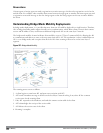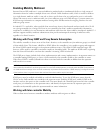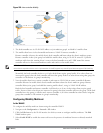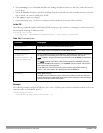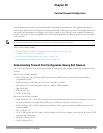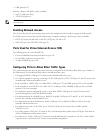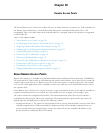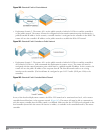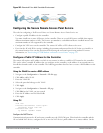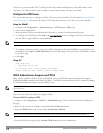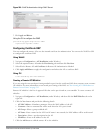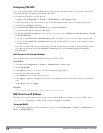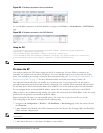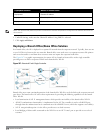
DellPowerConnectW-SeriesArubaOS6.2 | User Guide RemoteAccessPoints | 510
Chapter 30
Remote Access Points
The Secure Remote Access Point Service allows AP users, at remote locations, to connect to a Dell controller over
the Internet. Since the Internet is involved, data traffic between the controller and the remote AP is VPN
encapsulated. That is, the traffic between the controller and AP is encrypted. Remote AP operations are supported
on all of Dell’s APs.
Topics in this chapter include:
l "About Remote Access Points" on page 510
l "Configuring the Secure Remote Access Point Service" on page 512
l "Deploying a Branch Office/Home Office Solution" on page 517
l "Enabling Remote AP Advanced Configuration Options" on page 521
l "Understanding Split Tunneling" on page 535
l "Provisioning Wi-Fi Multimedia" on page 541
l "Reserving Uplink Bandwidth" on page 542
l "Provisioning 4G USB Modems on Remote Access Points" on page 543
l "Configuring W-IAP3WN Access Points" on page 545
l "Converting an IAP to RAP or CAP" on page 546
l "Enabling Bandwidth Contract Support for RAPs" on page 547
About Remote Access Points
Remote APs connect to a controller using Extended Authentication and Internet Protocol Security (XAuth/IPSec).
AP control and 802.11 data traffic are carried through this tunnel. Secure Remote Access Point Service extends the
corporate office to the remote site. Remote users can use the same features as corporate office users. For example,
voice over IP (VoIP) applications can be extended to remote sites while the servers and the PBX remain secure in
the corporate office.
Secure Remote Access Point Service can also be used to secure control traffic between an AP and the controller in a
corporate environment. In this case, both the AP and controller are in the company’s private address space.
The remote AP must be configured with the IPSec VPN tunnel termination point. Once the VPN tunnel is
established, the AP bootstraps and becomes operational. The tunnel termination point used by the remote AP
depends upon the AP deployment, as shown in the following scenarios:
l Deployment Scenario 1: The remote AP and controller reside in a private network which is used to secure AP-to-
controller communication. (Dell recommends this deployment when AP-to-controller communications on a
private network need to be secured.) In this scenario, the remote AP uses the controller’s IP address on the
private network to establish the IPSec VPN tunnel.



